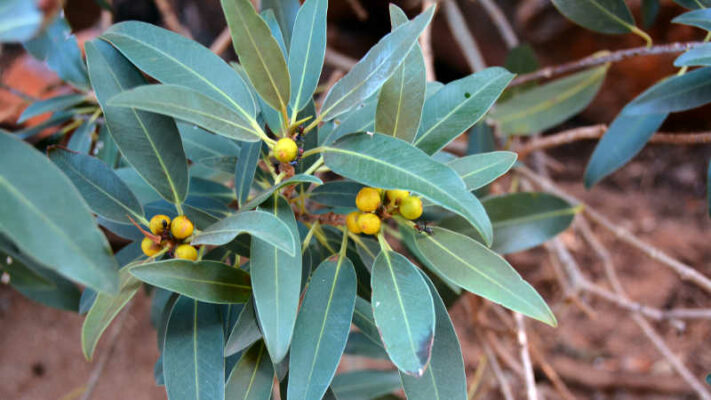
Figs are one of the world’s most recognisable trees and extensively used by First Nations peoples, but until recently a single widespread species, Ficus brachypoda, was the only kind recognised in central Australia.

Figs are one of the world’s most recognisable trees and extensively used by First Nations peoples, but until recently a single widespread species, Ficus brachypoda, was the only kind recognised in central Australia.
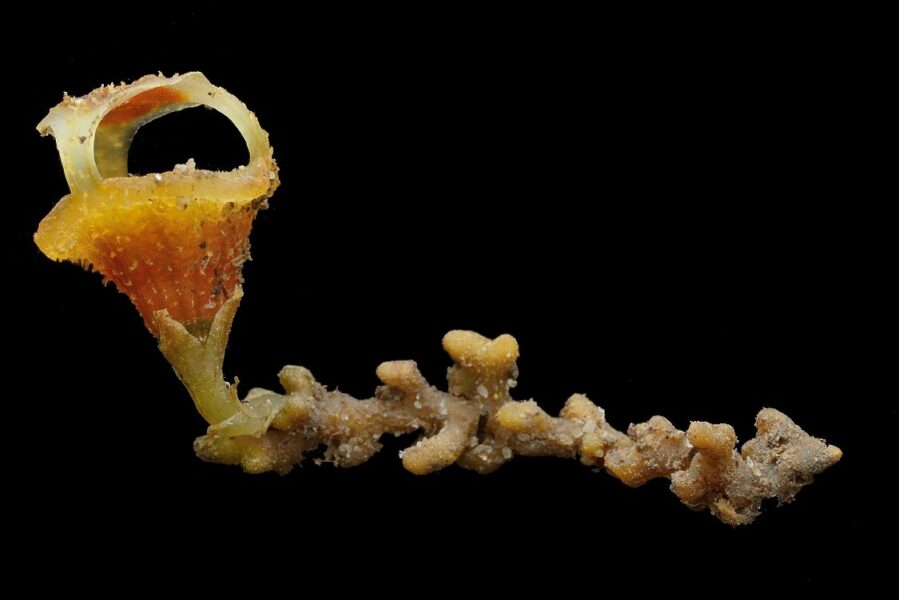
Scientists at Oxford and in Malaysia have just described a species of fairy lantern completely new to science.

Within the past decade, next-generation sequencing technologies have revolutionized the way in which genetic data are generated and analyzed. In the field of phylogenetics, this has meant that researchers are rapidly reconstructing the tree of life, a goal that biologists have been working toward since Darwin sketched the first phylogeny in his notebook in 1837.
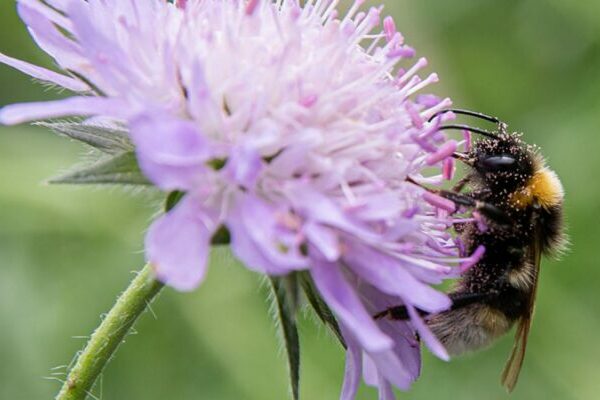
Researchers study the importance of interactions between plants and insects in the restoration of ecosystems
Insect decline is one of the greatest challenges facing our society. As a result of the destruction of many natural habitats, bees, bumblebees, butterflies, beetles and the like find less and less food. As a consequence, they are barely able to fulfil their role as pollinators of wild and cultivated plants. This trend is increasingly noticeable in agricultural regions in particular.
Researchers at the University of Münster have now taken a more detailed look at how the choice of seeds in restoration measures – i.e. the restoration of natural habitats at degraded land – affects how insects benefit from these measures. Here, not only the plant species plays an important role, but so does the geographical provenance of the seeds used – because the provenance influences not only insect diversity but also how often the pollinators visit flowers. The results of the study have been published in the “Journal of Applied Ecology”.
Background and methodology
Insects are indispensable for the functioning of ecosystems – and for human survival. They are necessary, for example, for the pollination of many cultivated plants which are, in turn, an essential source of nutrition for humans. In regions characterized by agriculture or in built-up areas with settlements and cities, there are reduced resources available to pollinators. In order to support them in their pollination, flower-rich habitats are created in the landscape, often in the form of wildflower stripes.
When flower stripes or other habitats are created, however, it should be taken into account that plant species are not homogeneous entities, as their populations genetically differ. This differentiation often occurs as a result of population adaptation to their local environment. A brown knapweed, for example, which grows near the sea – where frost is rare – will be less frost-resistant than a brown knapweed which grows in the mountains, where frost is common. The differences can be seen in many plant traits, and some of these differences can influence pollinators, for example the number of flowers or the time when they flower. “Depending on the provenance, some populations flower earlier than others,” as Dr. Anna Lampei Bucharová from Münster University’s Institute of Landscape Ecology explains, who also lead the study. “When setting up habitats for pollinators, these within-species differences have so far often been neglected,” she adds, “and the plants are mostly selected regardless of their provenance. This is why we tested to see whether the provenance of the plants influences pollinators.”
The geographical provenance of the seeds plays a key role in this context. In a field experiment, the researchers formed small experimental plant communities which had exactly the same species composition but different provenances. The populations came from the Münster region, from the area around Munich and from greater Frankfurt an der Oder. They then recorded flowering data, observed the pollinators visiting these communities, and compared the frequency and diversity of the pollinators in communities with different provenances.
The researchers discovered that a plant’s provenance influences pollinators – both how often the pollinators visit flowers and also the diversity of the insect species. “The effect can be considerable,” says Dr. David Ott, co-author of the study. “We observed twice as many visits by pollinators at flowers of one provenance than at flowers of another provenance. The most important parameter driving this is the phenology of the plant’s flower – in other words, the temporal sequence of flowering,” he adds. The researchers conclude that plants from some provenances started to flower earlier and more intensively than others, and so they presented more flowers and, as a result, interacted more frequently with pollinators.
The results are important both for scientists and for ecological restoration. The researchers are confident that Germany provides good conditions for implementing provenance-based restoration strategies, because regional ecotypes of many species are readily available in the so-called “Regiosaatgut” (“regional seeds”) system. This system provides regional seeds for many species for up to 22 regions in Germany. Thus, by selecting the appropriate plant origins, resources for pollinators could be sustainably improved.
Read the paper: Journal of Applied Ecology
Article source: University Münster
Image: Earth bumblebee covered with pollen from field scabious. Credit: WWU – Peter Leßmann
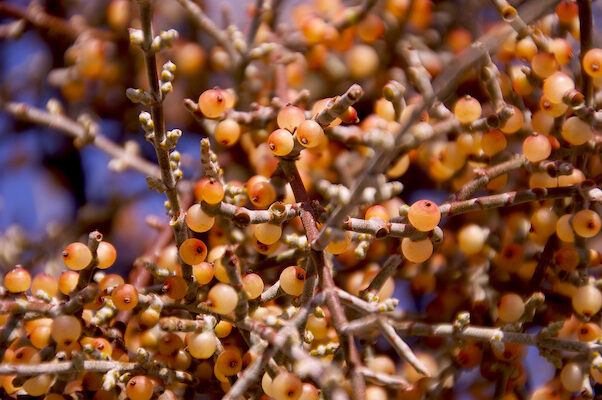
Like other plants, mistletoe is capable of using sunlight to create its own food, a process called photosynthesis. However, it prefers to siphon water and nutrients from other trees and shrubs, using “false roots” to invade its hosts.
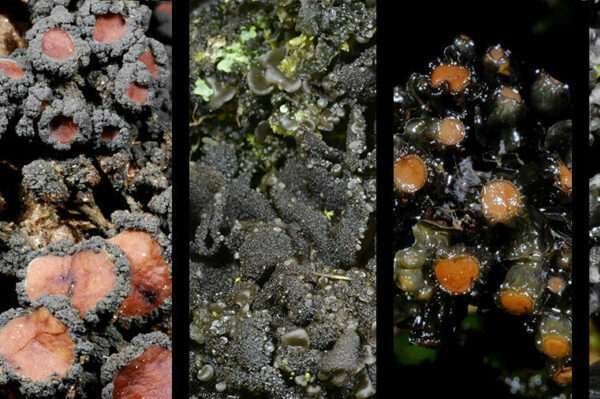
The species diversity and relationships of lichens in the genus Leptogium, which are often very difficult to identify to species, were assessed on the basis of DNA analyses using a large dataset collected during almost 10 years from East Africa.
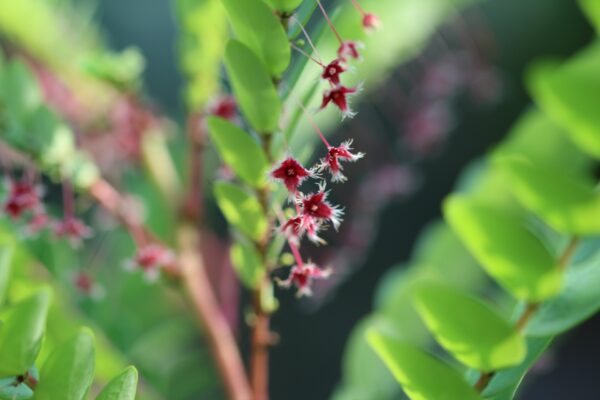
The tropical plant genus Phyllanthus has been the subject of debate in the taxonomic world for years. About fifteen years ago it became clear that the genus with nearly 900 plant species, contains plants that are considered separate groups. Since previous studies had only investigated a small portion of all Phyllanthus species, this prompted to take a closer look at the entire genus.
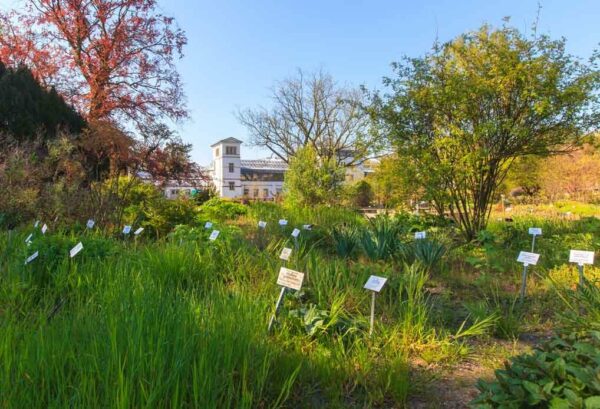
Researchers at Leipzig University (UL) and the German Centre for Integrative Biodiversity Research (iDiv) have compiled the world’s most comprehensive list of known plant species. It contains 1,315,562 names of vascular plants, thus extending the number of recognised plant species and subspecies by some 70,000 – equivalent to about 20%. The researchers have also succeeded in clarifying 181,000 hitherto unclear species names. The data set has now been published in Scientific Data. This marks the culmination of more than ten years of intensive research work and could help to make Leipzig a leading international centre of plant biodiversity research.
Leipzig could mean for the future of plant taxonomy what Greenwich meant for world time until 1972: it could become the reference city for correct scientific plant names. In an outstanding feat of research, the curator of the Botanical Garden of Leipzig University, Dr Martin Freiberg, and colleagues from iDiv and UL have compiled what is now the largest and most complete list of scientific names of all known plant species in the world. The Leipzig Catalogue of Vascular Plants (LCVP) enormously updates and expands existing knowledge on the naming of plant species, and could replace The Plant List (TPL) – a catalogue created by the Royal Botanic Gardens, Kew in London which until now has been the most important reference source for plant researchers.
“In my daily work at the Botanical Garden, I regularly come across species names that are not clear, where existing reference lists have gaps,” said Freiberg. “This always means additional research, which keeps you from doing your actual work and above all limits the reliability of research findings. I wanted to eliminate this obstacle as well as possible.”
World’s most comprehensive and reliable catalogue of plant names
With 1,315,562 scientific names, the LCVP is the largest of its kind in the world describing vascular plants. Freiberg compiled information from accessible relevant databases, harmonized it and standardised the names listed according to the best possible criteria. On the basis of 4500 other studies, he investigated further discrepancies such as different spellings and synonyms. He also added thousands of new species to the existing lists – species identified in recent years, mainly thanks to rapid advances in molecular genetic analysis techniques.
The LCVP now comprises 351,180 vascular plant species and 6160 natural hybrids across 13,460 genera, 564 families and 84 orders. It also lists all synonyms and provides further taxonomic details. This means that it contains over 70,000 more species and subspecies than the most important reference work to date, TPL. The latter has not been updated since 2013, making it an increasingly outdated tool for use in research, according to Freiberg.
“The catalogue will help considerably in ensuring that researchers all over the world refer to the same species when they use a name,” says Freiberg. Originally, he had intended his data set for internal use in Leipzig. “But then many colleagues from other botanical gardens in Germany urged me to make the work available to everyone.”
LCVP vastly expands global knowledge of plant diversity
“Almost every field in plant research depends on reliably naming species,” says Dr Marten Winter of iDiv, adding: “Modern science often means combining data sets from different sources. We need to know exactly which species people refer to, so as not to compare apples and oranges or to erroneously lump different species.” Using the LCVP as a reference will now offer researchers a much higher degree of certainty and reduce confusion. And this will also increase the reliability of research results, adds Winter.
“Working alone, Martin Freiberg has achieved something truly incredible here,” says the director of the Botanical Garden and co-author Prof Christian Wirth (UL, iDiv). “This work has been a mammoth task, and with the LCVP he has rendered an invaluable service to plant research worldwide. I am also pleased that our colleagues from iDiv, with their expertise in biodiversity informatics, were able to make a significant contribution to this work.”
Read the paper: Scientific Data
Article source: German Centre for Integrative Biodiversity Research (iDiv)
Image credit: Leipzig is host to the oldest botanical garden in Germany. On an area of only three hectares, around 6500 of the 350,000 plant species worldwide grow here. Credit: Swen Reichhold
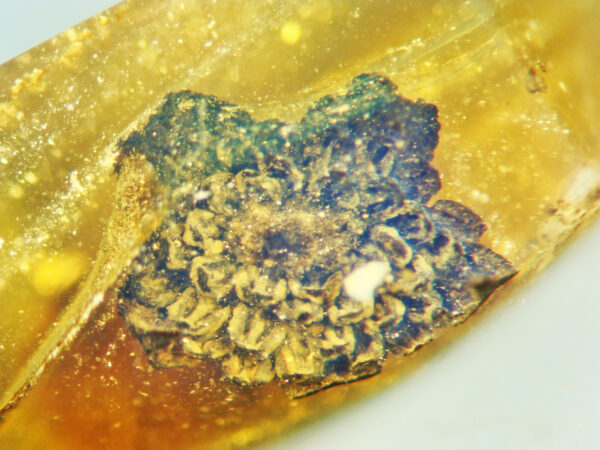
Oregon State University researchers have identified a spectacular new genus and species of flower from the mid-Cretaceous period, a male specimen whose sunburst-like reach for the heavens was frozen in time by Burmese amber.
“This isn’t quite a Christmas flower but it is a beauty, especially considering it was part of a forest that existed 100 million years ago,” said George Poinar Jr., professor emeritus in the OSU College of Science.
Findings were published in the Journal of the Botanical Research Institute of Texas.
“The male flower is tiny, about 2 millimeters across, but it has some 50 stamens arranged like a spiral, with anthers pointing toward the sky,” said Poinar, an international expert in using plant and animal life forms preserved in amber to learn more about the biology and ecology of the distant past.
A stamen consists of an anther – the pollen-producing head – and a filament, the stalk that connects the anther to the flower.
“Despite being so small, the detail still remaining is amazing,” Poinar said. “Our specimen was probably part of a cluster on the plant that contained many similar flowers, some possibly female.”
The new discovery has an egg-shaped, hollow floral cup – the part of the flower from which the stamens emanate; an outer layer consisting of six petal-like components known as tepals; and two-chamber anthers, with pollen sacs that split open via laterally hinged valves.
Poinar and collaborators at OSU and the U.S. Department of Agriculture named the new flower Valviloculus pleristaminis. Valva is the Latin term for the leaf on a folding door, loculus means compartment, plerus refers to many, and staminis reflects the flower’s dozens of male sex organs.
The flower became encased in amber on the ancient supercontinent of Gondwana and rafted on a continental plate some 4,000 miles across the ocean from Australia to Southeast Asia, Poinar said.
Geologists have been debating just when this chunk of land – known as the West Burma Block – broke away from Gondwana. Some believe it was 200 million years ago; others claim it was more like 500 million years ago.
Numerous angiosperm flowers have been discovered in Burmese amber, the majority of which have been described by Poinar and a colleague at Oregon State, Kenton Chambers, who also collaborated on this research.
Angiosperms are vascular plants with stems, roots and leaves, with eggs that are fertilized and develop inside the flower.
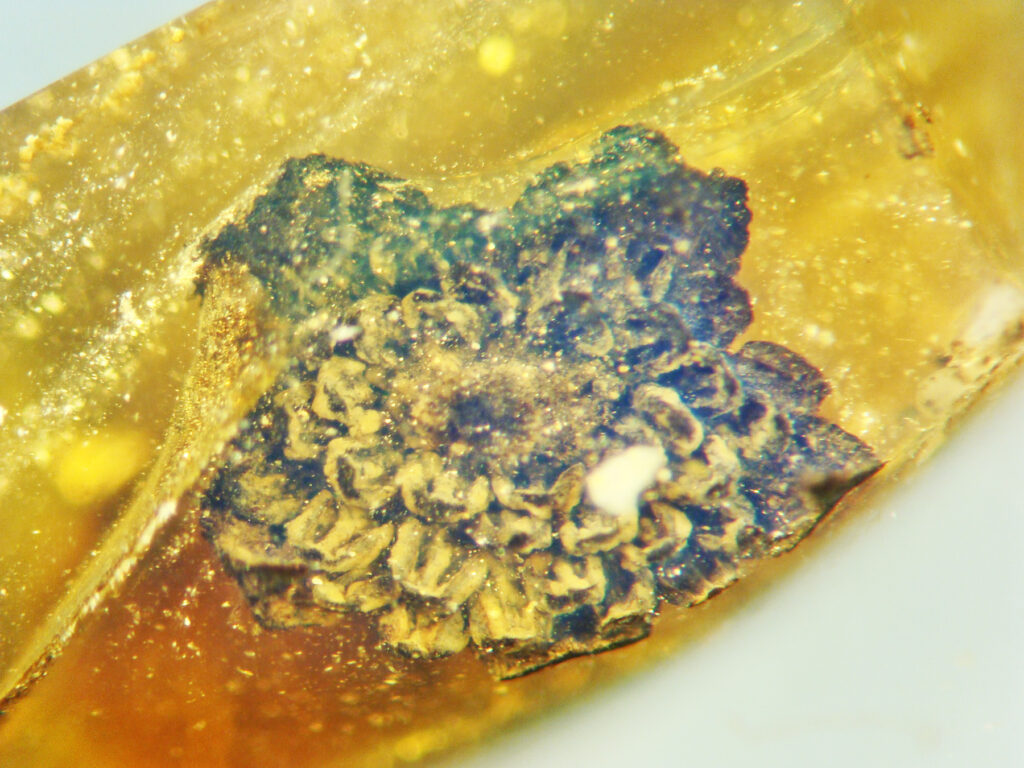
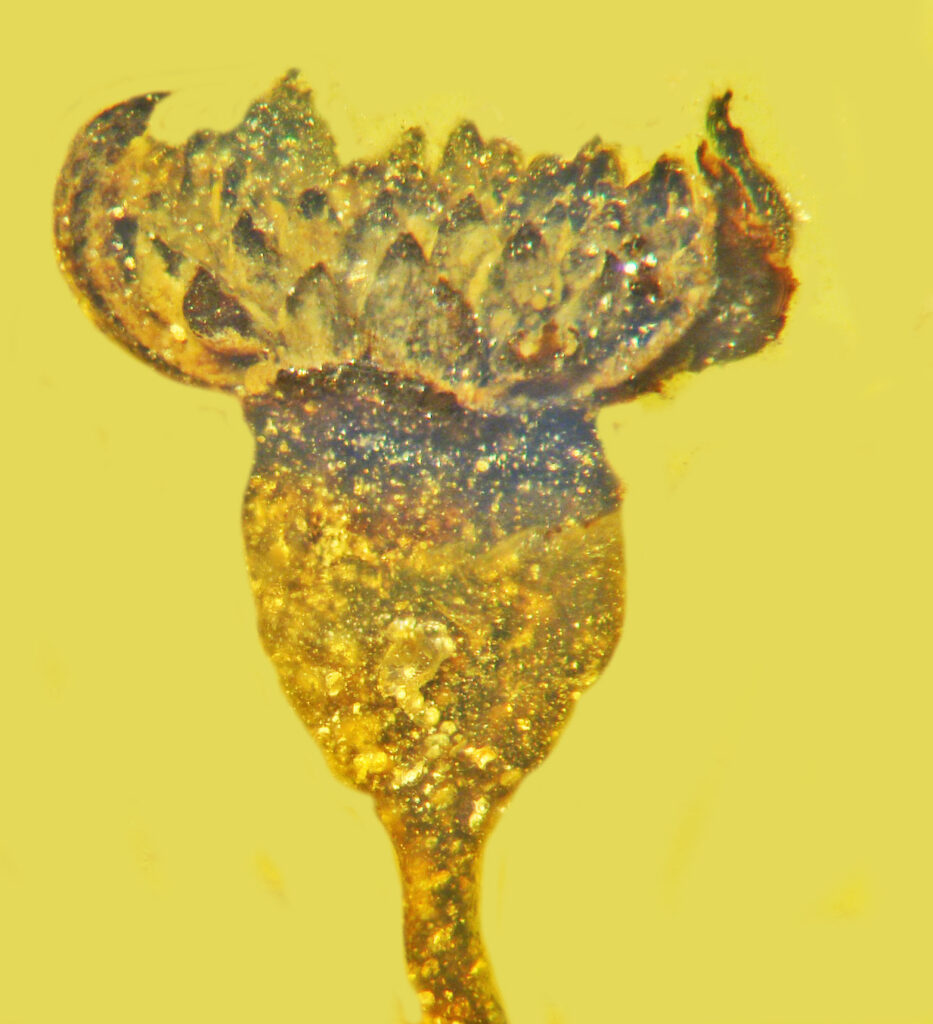
Since angiosperms only evolved and diversified about 100 million years ago, the West Burma Block could not have broken off from Gondwana before then, Poinar said, which is much later than dates that have been suggested by geologists.
Joining Poinar and Chambers, a botany and plant pathology researcher in the OSU College of Agricultural Sciences, on the paper were Oregon State’s Urszula Iwaniec and the USDA’s Fernando Vega. Iwaniec is a researcher in the Skeletal Biology Laboratory in the College of Public Health and Human Sciences and Vega works in the Sustainable Perennial Crops Laboratory in Beltsville, Maryland.
Read the paper: Journal of the Botanical Research Institute of Texas
Article source: Oregon State University
Author: Steve Lundeberg
Image credit: Oregon State University
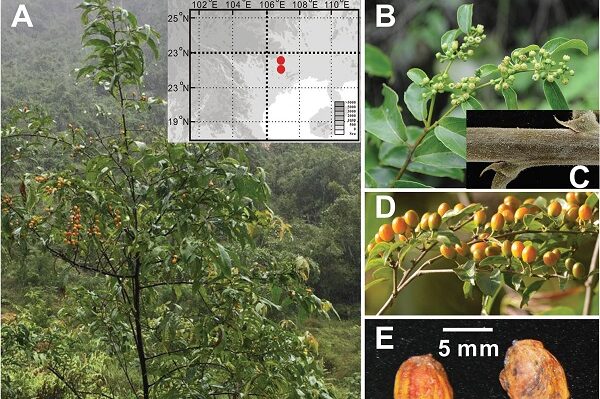
Rhamnella in the family of Rhamnaceae is a small genus. To date, 10 species have been accepted into this genus. In field investigations, researchers found two Rhamnella populations from southwest Guangxi that belonged to the evergreen group but could not be ascribed to any of the evergreen Rhamnella species.